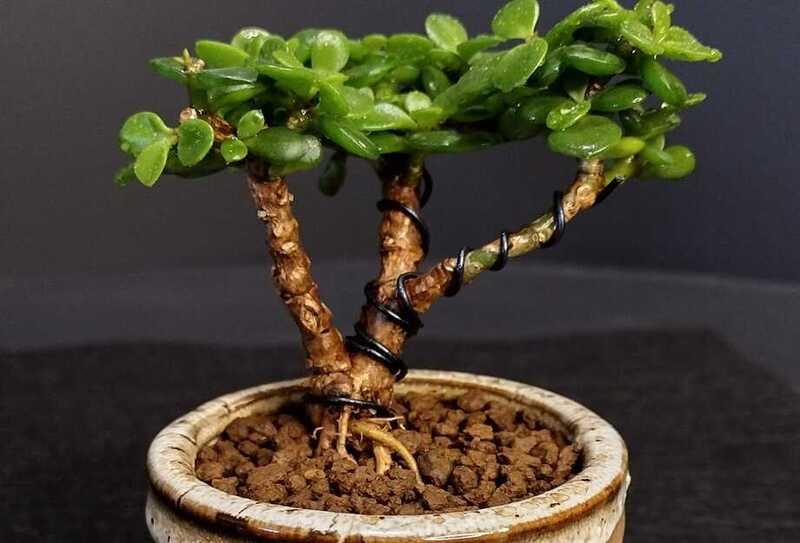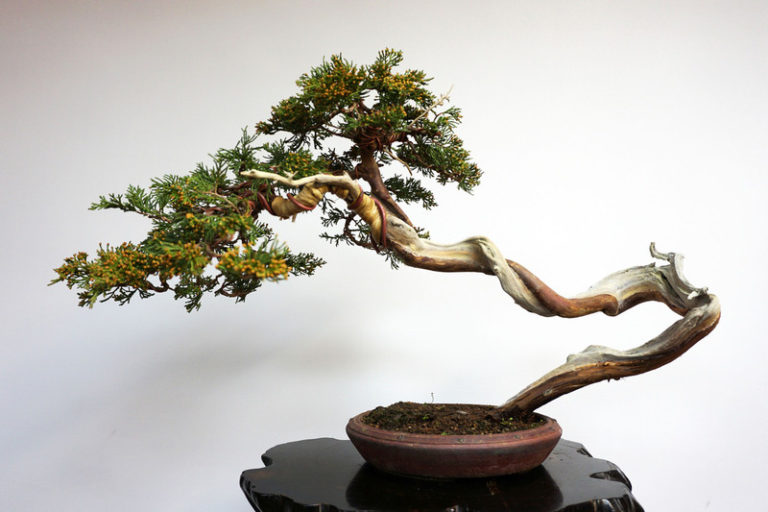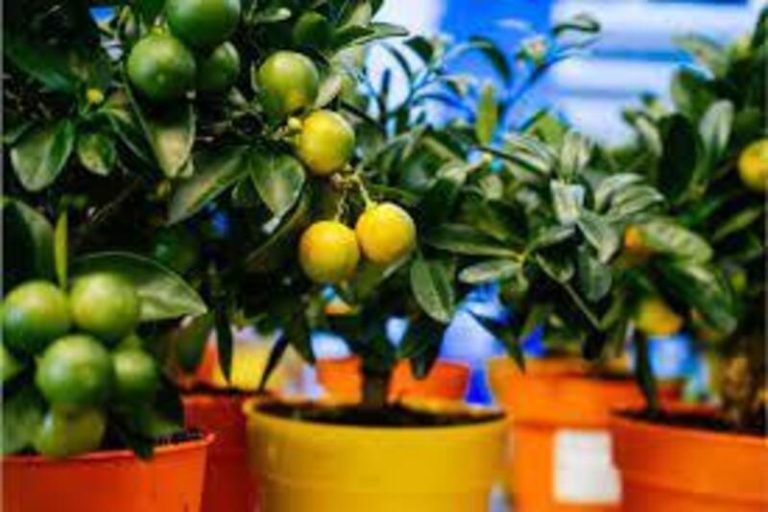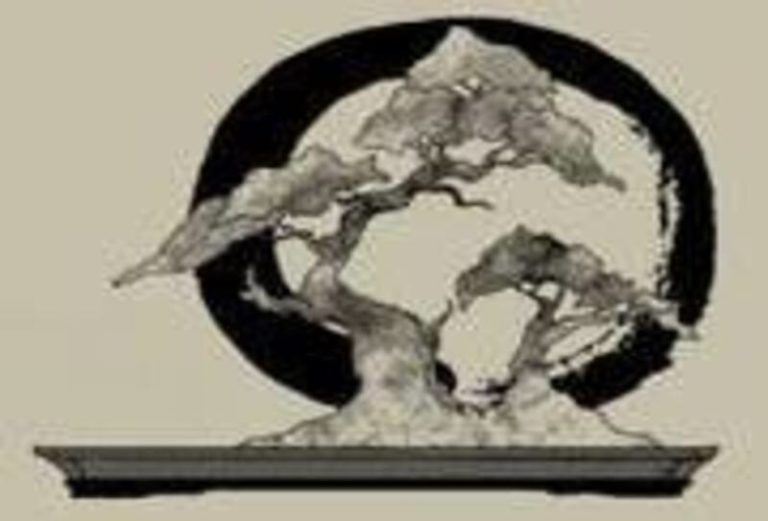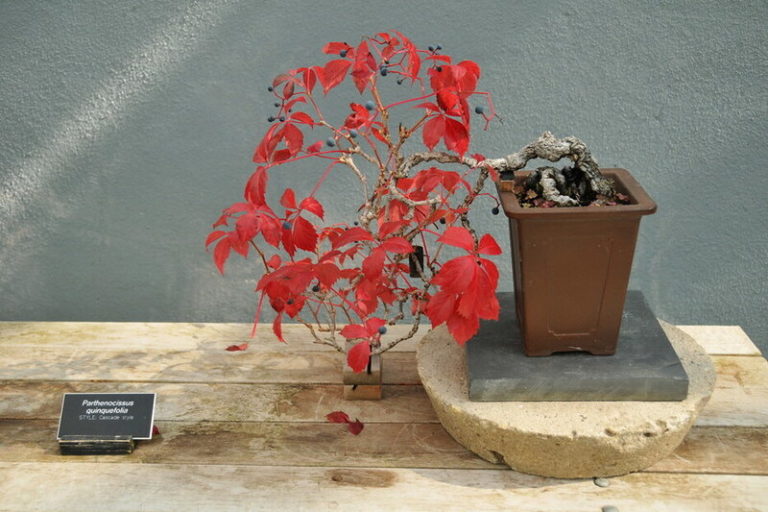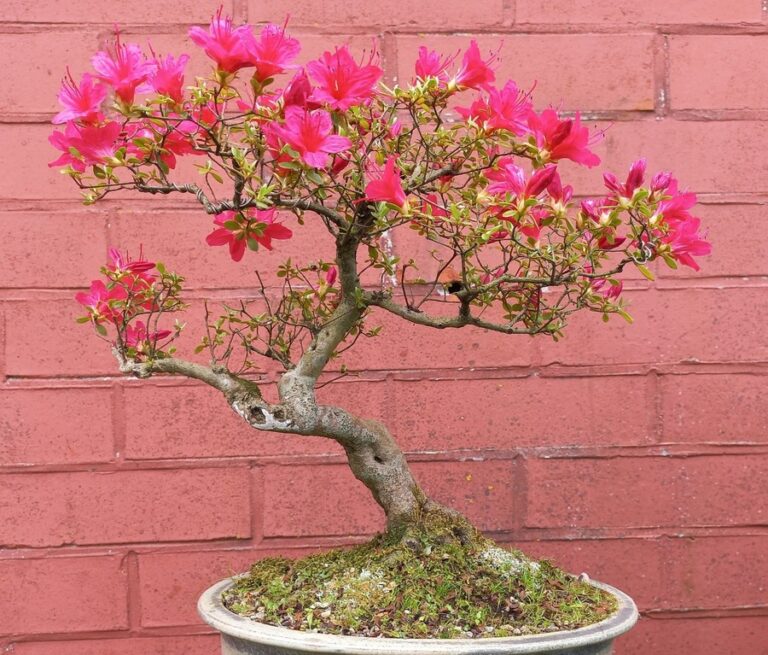Elephant Bush Bonsai: An Adaptable and Versatile Bonsai Plant for Your Home or Garden
Elephant Bush Bonsai is a popular choice among bonsai enthusiasts because it’s easy to grow and care for. It’s also known as Portulacaria Afra or Jade Plant, and is native to South Africa. The plant’s leaves resemble elephant ears, which is where its name comes from.
How to Grow Elephant Bush Bonsai
It’s a satisfying experience to grow an Elephant Bush (Portulacaria afra) as a bonsai. This succulent-looking plant’s tiny leaves, intriguing trunk structure, and durability make it a great choice for bonsai growth. Here’s a step-by-step guide on growing a bonsai elephant bush:
Selecting the Plant: Select a robust Elephant Bush plant with tiny leaves and a strong, woody stem. Select a plant that is perfect for bonsai, meaning it should have strong branching and a compact growth habit.
Selecting a Pot: Pick a bonsai pot that is shallow and has adequate drainage holes. The container need to be somewhat bigger than the elephant bush’s root ball.
Repotting: In the early spring, repot the elephant bush. Take the plant out of its container with care, and cut off any roots that are too long or spiraling. Make sure the roots of the plant are dispersed radially throughout the container when you repot it in well-draining bonsai soil.
Watering: Elephant Bush bonsai like soil that drains properly. When the top inch of soil seems completely dry to the touch, give the plant water. Steer clear of overwatering as this might cause root rot. In between watering, allow the soil to become somewhat dry.
Light: Elephant Bush bonsai are sun-loving plants. To keep your bonsai healthy, aim for at least 4-6 hours of direct sunlight each day. If you’re keeping your bonsai indoors, pick a spot near a south-facing window for the most sunlight.
Fertilizing: During the growing season fertilize the Elephant Bush bonsai monthly with a balanced liquid fertilizer diluted to half strength. Reduce or stop fertilization during the winter months when growth slows down.
Pruning and Shaping: Elephant Bush bonsai respond well to pruning and shaping. Regularly prune back new growth to maintain the desired shape and encourage branching. Use sharp bonsai shears to prune unwanted branches and foliage.
Wiring: Elephant Bush bonsai have flexible branches that can be wired to create interesting shapes. Gently bend and position them into your desired form using bonsai wire. Remember, a light touch is key to avoid branch damage!
Pest and Disease Control: Monitor the Elephant Bush bonsai for pests like spider mites and mealybugs. Treat your bonsai with insecticidal soap or neem oil to banish these pests. To help prevent fungal diseases, ensure good air circulation around your plant. Think breezy and healthy!
Winter Care: Elephant Bush bonsai are sensitive to cold temperatures. Protect the bonsai from freezing temperatures by bringing it indoors during winter or placing it in a greenhouse. Maintain moderate temperatures above 50°F (10°C) and reduce watering during dormancy.
By following above guidelines and providing attentive care, you can successfully grow and maintain a beautiful Elephant Bush bonsai. Enjoy the process of nurturing this unique and resilient plant into a stunning bonsai specimen!
Characteristics of Elephant Bush Bonsai
Elephant Bush Bonsai, also known as Portulacaria Afra or Jade Plant, has a number of unique characteristics that make it a popular choice for bonsai enthusiasts. Here are some of its key features:
Appearance: Animal Bush A bonsai tree is a tiny, tightly packed tree that may reach a height of three feet. Round and meaty, its leaves may be either bright green or dark green depending on how much light they get. The bark is reddish-brown in hue and is thick.
Succulent: Elephant Tree Succulent plants, such as bonsai, retain water in their leaves and stems. This enables it to thrive in dry conditions, making it an excellent alternative for folks who regularly forget to water their plants.
Adaptable: Elephant Bush Bonsai are very flexible and can grow well in both low-light and high-light settings. It does best in bright, indirect sunlight, but it can also grow in low light.
Drought-tolerant: Since Elephant Bush Bonsai is a succulent, it can handle dry conditions and doesn’t need to be watered as often as other plants.
Easy to care for: Bush, Elephant Bonsai is a great option for beginner gardeners since it requires less attention and care.
As a result of its singular appearance, succulent nature, adaptability, and minimal maintenance requirements, Elephant Bush Bonsai is a favorite among bonsai enthusiasts.

Caring for Elephant Bush Bonsai
The maintenance requirements of an Elephant Bush Bonsai are low, making it a good option for beginner growers. Some advice on how to keep your Elephant Bush Bonsai healthy and beautiful:
- Light: Elephant Bush Bonsai needs direct sunlight that is bright. It can grow in places with less light, but it won’t do as well. Place the plant near a sunny window or under a grow light for the best results.
- Soil: Elephant Bush Bonsai need soil that drains well and is full of organic matter. You can use a soil mix for cacti and succulents, or you can make your own by mixing potting soil, sand, and perlite.
- Watering: Water your Elephant Bush Bonsai deeply but infrequently. Allow the soil to dry out completely before watering again. In winter, you can reduce watering to once a month or less.
- Fertilizer: Elephant Bush Bonsai doesn’t need a lot of fertilizer, but you can feed it once a month during the growing season with a balanced fertilizer.
- Pruning: You can shape your Elephant Bush Bonsai by pruning it regularly. Pinch back new growth to encourage branching and shape the tree as desired.
Elephant Bush Bonsai Care Sheet
| Aspect | Care Tips |
| Light | Elephant Bush Bonsai prefers bright, indirect sunlight. Avoid placing it in direct sunlight, especially during hot summer months. |
| Watering | Allow the soil to dry out completely between watering’s. Overwatering can lead to root rot and other problems. Water sparingly during winter months. |
| Soil | Use well-draining soil that is specifically formulated for succulent plants. A mixture of perlite, sand, and peat moss can also work well. |
| Fertilizing | Elephant Bush Bonsai does not require frequent fertilizing. During the growing season, use a low-nitrogen fertilizer once a month (spring and summer). |
| Pruning | Your Elephant Bush Bonsai will stay the same size and shape if you prune it. Use pruning shears with sharp blades to cut back branches and leaves as needed. |
| Wiring | Wiring may be used to shape and design the Elephant Bush Bonsai’s branches. Employ flexible wire to carefully round the branches. |
Common Problems with Elephant Bush Bonsai
While Elephant Bush Bonsai is generally a healthy plant, there are a few common problems that can arise if it’s not properly cared for. Here are some of the most common issues:
- Overwatering: Elephant Bush Bonsai is susceptible to root rot if it’s overwatered. This can cause the leaves to turn yellow and drop off. To avoid overwatering, allow the soil to dry out completely before watering again.
- Underwatering: While Elephant Bush Bonsai is drought-tolerant, it still needs regular watering to stay healthy. If it’s not watered enough, the leaves can become dry and shriveled.
- Pests: Like any plant, Elephant Bush Bonsai can be affected by pests such as spider mites and mealybugs. These can cause the leaves to turn yellow or brown, and can also lead to stunted growth. Regular inspection and treatment with an insecticidal soap can help prevent pest infestations.
- Fungal diseases: Elephant Bush Bonsai can be susceptible to fungal diseases such as powdery mildew and leaf spot. These can cause the leaves to become discolored and drop off. To prevent fungal diseases, make sure the plant is properly spaced and ventilated, and avoid getting the leaves wet when watering.
By taking care to avoid these common problems, you can help ensure that your Elephant Bush Bonsai stays healthy and thrives for years to come.
Conclusion
The Elephant Bush Bonsai is an excellent choice for those who are new to bonsai growing. It’s easy to care for, adaptable to different lighting conditions, and has a unique appearance. With proper care, your Elephant Bush Bonsai can thrive and bring you joy for years to come.
FAQ:
Q: What is Elephant Bush Bonsai?
A: Elephant Bush Bonsai is a succulent plant that is commonly grown as a bonsai. It is also known as Portulacaria afra, dwarf jade plant, or elephant food.
Q: What are the care requirements for Elephant Bush Bonsai?
A: Elephant Bush Bonsai is a low-care plant that doesn’t need much care. It likes bright, indirect sunlight, soil that drains well, and not too much water. It can handle drought and doesn’t need fertilizer very often.
Q: Can Elephant Bush Bonsai be grown indoors?
A: Yes, Elephant Bush Bonsai can be grown indoors as long as it receives adequate sunlight and is not overwatered. It is a great plant for beginners and for those who do not have a lot of outdoor space.
Q: How do I prune and shape my Elephant Bush Bonsai?
A: To keep the size and shape of your Elephant Bush Bonsai, you need to prune and shape it. Use pruning shears that are clean and sharp to cut the branches and leaves as needed. You can also use wire to make the branches into any shape or style you want.
Q: How do I protect my Elephant Bush Bonsai from pests and diseases?
A: Elephant Bush Bonsai can be susceptible to pests such as spider mites and mealybugs, as well as fungal diseases such as powdery mildew and leaf spot. Regular inspection and treatment with an insecticidal soap and fungicide can help prevent infestations and diseases.
Q: Can Elephant Bush Bonsai be propagated?
A: Yes, Stem cuttings can be used to grow Elephant Bush Bonsai. Just take a good stem off the plant and dry it for a few days. The stem should then be planted in well-draining soil and kept wet until roots form.
Q: Is Elephant Bush Bonsai toxic to pets or humans?
A: No, Elephant Bush Bonsai is not toxic to pets or humans. However, as with any plant, it is always best to keep it out of reach of small children and pets to avoid ingestion.
Also Read:

